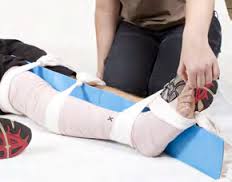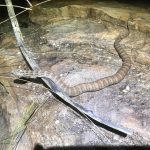When you know how to successfully treat a snake bite, it could mean the difference between your survival and death:
You need to take first aid for snake bite seriously. 
What you need to know about a snake bite
Lets look at this from the fact that prevention is always better than cure, there are many ways to minimize the risk of being bitten by a snake.
- At home- clean up your yard, keep your grass mowed and short, do not leave palm fronds, timber piles, bricks and sheets of tin lying around as these are all great places snakes love to hide and set up home.
- Out for a walk/ working in the bush- Long pants and covered in shoes, if you accidentally stand on one, at least you will have protective clothing.
However the reality is not everyone wears protective clothing and carries a pressure bandage with them every time they go for a walk!!!!!!
So let’s look at the fact that even though the first aid for a snake bite is layed out for you in the next few paragraphs, not everyone has the available means to do a text book first aid for a snake bite.
Having worked remote, the reality is real, so getting the basics of why you apply this first aid, and what you’re trying to achieve is a good start in understanding the fundamentals behind it.
In basic terms… your aiming to slow the venom transportation through your blood to your lymph nodes, buy slowing your heart rate, and applying pressure to the bite site.
What first aid can you apply to a snake bite?
So…you’ve been bitten by a snake
- Never assume you know what species it is, even google gets it wrong! Don’t be a Rambo and try and catch it and chop off its head, there’s better ways to pick up nurses at the hospital than coming in with a dead snake you just killed.
- First don’t stress, I stress this point that only 2-3 people die in Australia every year by snake bite, you would be more likely to die in the car on the way to hospital to get treated by the snakebite than the actual snakebite, we live in a western culture which have prime medical help…so chill out /meditate, whatever you can to get that heart rate down. Minimise movement if it is possible, but if you are alone, you’ll need to consider the following strategies…
- If the bite is on the arm or finger, remove any watches, bracelets or rings, as the area swells these will constrict the limbs and also act like a tourniquet.
- Restrict movement with a sling or splint, in reality you probably won’t be carrying these, so a sturdy stick or branch close by can act as a splint, the aim is to restrict that movement.
- If you have a pressure bandage or 2, or any bandage obviously this would be ideal and text book, however if you don’t, take your shirt off, (definatly a much better way to pick up the nurses) and rip it in a way you can use it like a bandage, shirt, shorts, whatever you have to apply some pressure to the bite site…however remember its pressure, not a tourniquet like in the movies, that will do you more damage than good, as one you’ll cut the blood circulation off to that area, 2. when you get to hospital and the medical team takes that tourniquet off, there will be a mass rush of blood carrying the venom through your body.
- Mark the spot with a pen, or lipstick whatever you have to indicate to medical staff where exactly you have been bitten. This allows for a quicker turnaround time when you hit hospital, as they can cut the bandage/ shirt, without having to take the whole bandage off, to the exact spot where you were bitten and swab the site which is needed to determine what antivenin is needed…this is why its important NOT TO WASH OR WHIPE THE BITE SITE.
- As soon as it is possible, get yourself to the nearest hospital, driving yourself there is obviously not recommended, use the emergency personnel, care flight choppers if remote, or ambulance.
What to avoid if you are bitten
- You may be tempted to reach into your first aid kit for pain relievers. But taking aspirin, or any other medication should be avoided.
- Despite what you have seen in the movies, don’t be tempted to try to suck the venom out or use a knife to cut it out. These actions have not proven to be useful, and you could cause further injuries.
While most bites are not fatal, it is important to familiarise yourself with first aid for snake bite emergency procedures.
Above all, remember that expert advice and assistance is available in hospital emergency rooms… always the best place to receive treatment for any snake bite… regardless of the advice from well-meaning onlookers.
Count yourself a lucky one if you get bitten by a snake in Australia
It’s a privilege living in Australia with the ability to have appropriate and effective medical care. Across the globe snake bites affect the lives of 4.5 million people every year, find out more on how you can help support the global snakebite initiative, working towards creating accessible antivenom for remote villages, community education and health care.
https://www.snakebiteinitiative.org
Call me on…
0433 693 569
Or email me at…
natwildlifeadventurer@gmail.com
And we’ll discuss how we can organise a live demonstration (no, not an actual snake bite).
Take care,
Nat Hill
Wildlife Adventurer & Motivational Speaker
Live Your Dream








